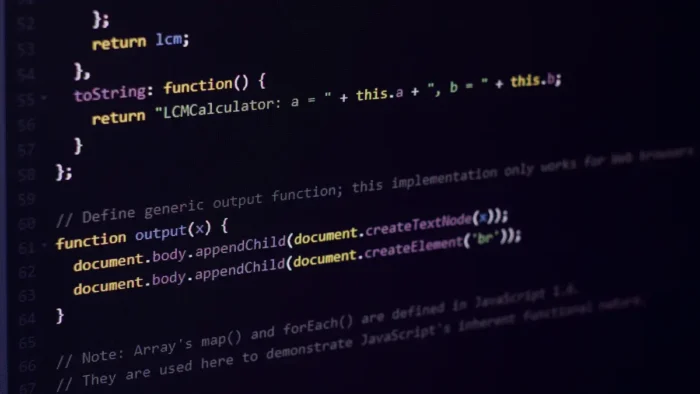Mobile app development is an increasingly crucial aspect of every business in today’s digital landscape. With an estimated 6.3 billion smartphone subscriptions across the globe, companies would be remiss not to take advantage of this channel to gain new customers and retain existing ones. It’s a practical solution allowing organizations to reach a wider audience while increasing user engagement.
One of the companies’ goals today is to build a well-designed mobile app that will help promote their brand through positive user experiences. Unfortunately, mobile apps aren’t that easily built and require technical expertise and the right tools for the job. Today’s digital landscape is advantageous for businesses because mobile app development frameworks are available to help build a mobile app that fits your business requirements. The following are the most popular frameworks used by mobile app developers.
1. Flutter
Developed by Google, Flutter is an open-source UI toolkit that uses Dart, a client-optimized programming language with C-style syntax. Flutter is popular with developers because it allows them to develop mobile apps for Android and iOS platforms using a single codebase for both. It also has a hot reload feature that allows live code updates, which makes debugging quicker and more efficient. Flutter’s rich set of pre-designed widgets also helps create beautiful user interfaces.
A relatively new framework, Flutter’s main drawbacks include limited third-party library support. Mobile apps created using the framework also tend to be on the larger side, which might affect the overall user experience.
2. React Native
React Native is a framework developed by Facebook that uses JavaScript, a language familiar to most front-end developers. Its “learn once, write anywhere” philosophy empowers developers to reuse a single codebase across multiple platforms. It uses JSX, a programming language that combines XML markup and JavaScript, and the native rendering in APIs in Objective-C and Java.
Mobile apps created using React Native are rendered via mobile UI components that are designed to provide a native experience for users. This is an overall better user experience than other apps that provide web views, which are essentially a live view of a web page designed to look like an app. It is mainly used to develop mobile apps on Android and iOS, but it can also be used to develop apps for future mobile platforms.
Despite its strengths, React Native app development has limitations. Not all native features may be readily available, requiring additional packages or customization. Developers have also voiced a few compatibility issues with third-party libraries. These concerns, however, are typically addressed promptly by an active React Native community.
3. Xamarin
Powered by Microsoft, Xamarin is an open-source, cross-platform framework that extends the .NET platform with libraries to allow the development of mobile apps. Xamarin applications are written in C#, a modern programming language that improves upon Java and Objective-C, adding functional constructs and dynamic language features. One of Xamarin’s main draws is access to extensive native APIs, which enable all device-specific functionalities. It’s an attractive choice for developers due to its integration with Microsoft tools and comprehensive feature set.
The steep learning curve, however, makes developers hesitant to use Xamarin. Compared to other mobile app development frameworks, its architecture is quite complex. There are also specific platform features not available or supported by Xamarin, limiting mobile app development possibilities.
4. Ionic
Ionic is a development framework that combines HTML, CSS, and AngularJS to build mobile apps that run on multiple platforms. A widely used framework, it provides a vast library of pre-designed UI components that help create visually appealing UI’s. One of Ionic’s main advantages is its ability to maximize the power of web technologies to help developers with web development backgrounds transition into mobile app development. It also has an active community providing support and various customization options.
As a hybrid framework, however, Ionic might not provide the same level of performance as native mobile apps. Additionally, more complex apps may require native development for optimal functionality.
5. PhoneGap
Also known as Apache Cordova, PhoneGap is an open-source framework that uses web technologies like HTML, CSS, and JavaScript in building cross-platform mobile apps. It provides a consistent user experience across platforms as an intermediary between an app’s web code and a device’s native functions. PhoneGap’s simplicity makes it an ideal choice for developers new to mobile app development. Its extensive plugin ecosystem ensures access to various device features and capabilities.
However, PhoneGap’s dependence on web technologies can negatively affect performance, especially compared to native apps. Custom plugins may also be required to enable certain functionalities. It also relies heavily on web views, which can limit the responsiveness of mobile apps.
The Framework of Choice
Ultimately, the success of an organization’s mobile app development project relies on choosing a development framework that fits your technological needs, budget, and other business requirements. The frameworks mentioned above are five of the most popular ones today, and they would be good choices when you’re just starting out on mobile app development. Each has its strengths and weaknesses; choosing which can serve you best will depend on your current needs and long-term goals.
With the rapid changes in mobile technology and app development, keeping abreast of the latest trends and innovations is essential for developers and companies to deliver high-quality mobile apps and added value to end users.





